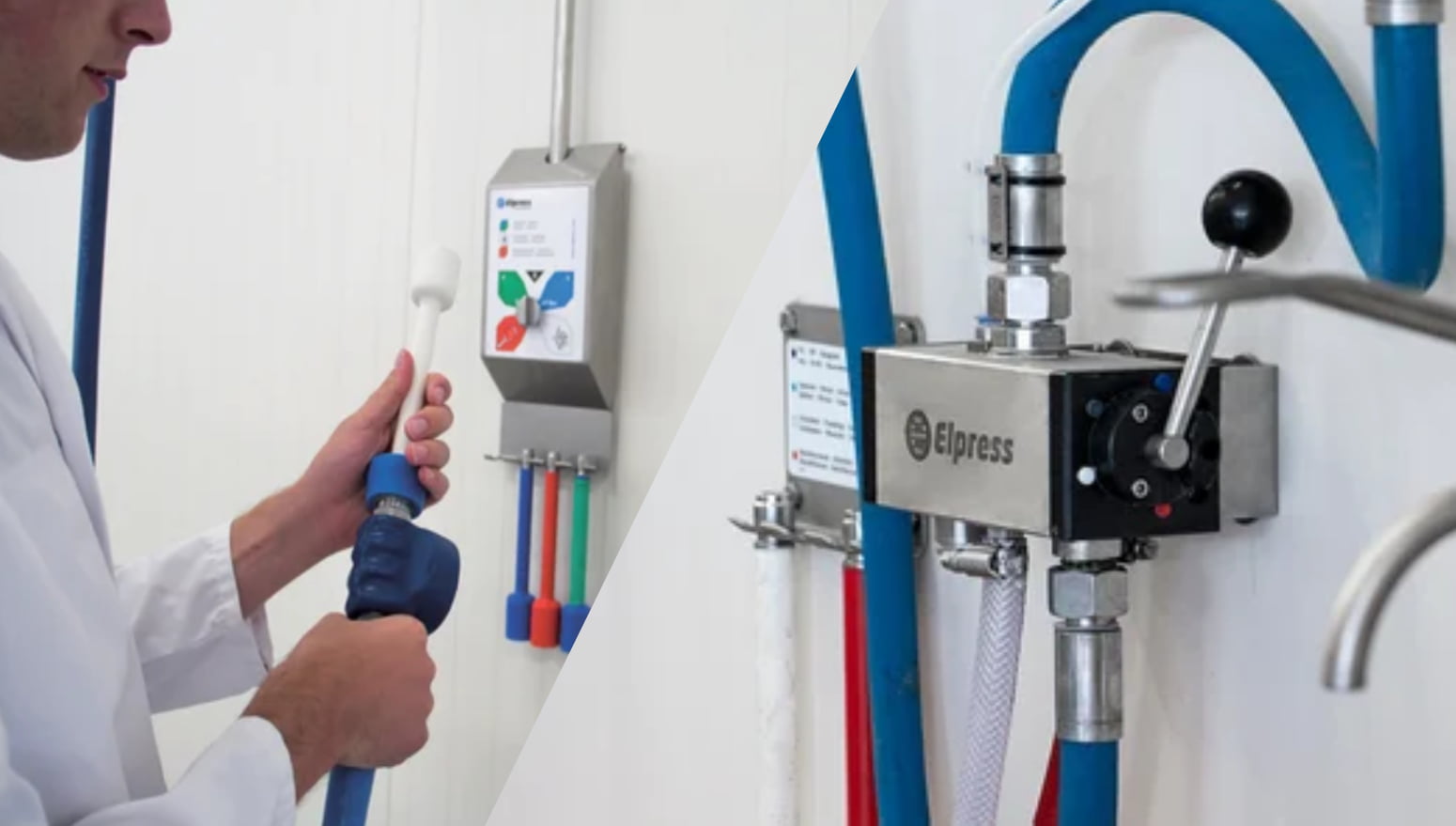In the world of industrial cleaning, safety and compliance are paramount considerations. This page delves into the essential aspects of safety and compliance standards in clean-in-place (CIP) cleaning processes. Cleaning equipment manufacturers like Elpress develop CIP cleaning installation processes that adhere to safety protocols, regulate industry standards and continuously improve hygiene and cleaning measures in the food industry.
Overview:
- What is Clean-in-Place (CIP) Cleaning?
- How does CIP Cleaning Work?
- Implementing CIP Cleaning in Various Industries
- Key Considerations in CIP Cleaning
- Safety and Compliance Standards
CIP Cleaning: A guide
What is Clean-in-Place (CIP) cleaning?
The clean-in-place (CIP) process automates and streamlines cleaning operations within closed systems, such as tanks, pipelines, and processing equipment, without disassembly.
How does CIP cleaning work?
By circulating cleaning solutions through an installed system, CIP effectively removes contaminants, residues, and biofilms, ensuring equipment hygiene and product safety. A typical CIP system comprises tanks, pumps, valves, sensors, and control systems, all working in concert to deliver efficient and repeatable cleaning cycles.
Advantages of adopting a CIP cleaning installation
Here are some of the pros of adopting a CIP cleaning system in your industry plant:
- Safer work environment
- Efficient chemical usage
- Reduces the risk of food contamination
- Enhance work efficiency
- Reduce chemical waste
- Thorough equipment cleaning
- Facilities compliance
- Reduces the risks of manual handling and washing of machinery
Disadvantages of adopting a CIP cleaning installation
Some disadvantages to consider about CIP cleaning installation processes:
- Requires space in the production area
- Adaptation to the production process
- Demands a certain level of investment for setup and implementation
Implementing CIP Cleaning in Various Industries
Food and Beverage Industry
In the food and beverage industry, CIP plays a pivotal role in ensuring compliance with safety standards. Food processing plants utilise CIP systems to sanitise a wide range of equipment, including cleaning pallets, mixers, tanks, pipelines, and fillers, ensuring compliance with stringent safety standards.
These automated systems enable thorough cleaning without the need for manual disassembly, reducing downtime and labour costs. CIP technology streamlines sanitation processes, minimises the risk of contamination, and upholds product integrity, thereby safeguarding consumer health
Meat Industry
Meat processing plants rely on CIP systems to clean and sanitise the meat processing equipment such as meat grinders, slicers, sanitising conveyors, and packaging machinery.
These systems effectively remove residues, grease, and pathogens from surfaces, reducing the risk of cross-contamination and microbial growth. By implementing CIP protocols, meat processors can maintain high standards of cleanliness, comply with regulatory requirements, and deliver safe, quality products to consumers.
Learn more: Meat processing plant cleaning and sanitising
Dairy Industry
Dairy CIP systems are tailored to address the unique challenges of handling milk products, including the removal of milk residues, biofilms, and bacteria. By automating the cleaning process, the dairy industry can minimise the risk of product contamination, extend shelf life, and uphold the reputation of their brands for delivering safe dairy products to consumers.
Key Considerations in CIP Cleaning
Cost Efficiency and Sustainability
While initial investments in CIP systems may seem substantial, the long-term cost savings and sustainability benefits are undeniable. By optimising resource utilisation, minimising water and chemical consumption, and reducing downtime associated with manual cleaning, CIP delivers significant economic and environmental advantages.
Safety and Compliance Standards
Ensuring safety and compliance with industry standards is paramount in CIP cleaning processes across various sectors. Here’s a closer look at the key considerations:
- Occupational health and safety – Proper training on equipment operation, handling of cleaning agents, and emergency procedures is essential to prevent accidents and injuries.
- Industry standards and guidelines – Industries subject to regulatory oversight, such as food and pharmaceuticals, must adhere to specific guidelines and standards governing cleanliness and sanitation.
- Documentation and audit trails – Maintaining detailed documentation of CIP cleaning processes is essential for demonstrating compliance with regulatory requirements and industry standards. This includes recording cleaning parameters, such as temperature, pressure, and chemical concentrations.
- Validation and verification – Verification entails ongoing monitoring and testing to verify the continued effectiveness of the cleaning process and identify any deviations or areas for improvement.
CIP Cleaning with Elpress technology
As pioneers in CIP technology, Elpress and FPE are dedicated to delivering innovative solutions that empower businesses to achieve excellence in cleaning and sanitation. With Elpress’s speciality in industrial cleaning equipment, you can elevate your food processing plant with industrial washing systems and cleaning practices. If you’d like to discuss Elpress products further, get in touch with the FPE team today at 1800 882 549 in Australia or 0800 100 003 in New Zealand.
FAQs
What is a CIP procedure?
A CIP procedure is an automated cleaning method designed to sanitise the interior surfaces of pipes, vessels, equipment, filters, and their associated fittings without requiring significant disassembly.
What are the 4 principles of CIP?
The four principles of CIP:
- Time
- Action
- Chemical
- Temperature
These 4 are fundamental to achieving effective and sanitary cleaning in various industries. These principles emphasise the importance of timing, mechanical action, chemical agents, and optimal temperatures in ensuring thorough sanitation without disassembly.
What is CIP cleaning and why is it crucial in various industries?
Clean-in-place (CIP) cleaning is a method used to sanitise the interior surfaces of pipes, vessels, and process equipment without disassembly. It is crucial in industries such as food, beverage, and pharmaceuticals to maintain hygiene, preserve product quality, and comply with regulatory standards.






